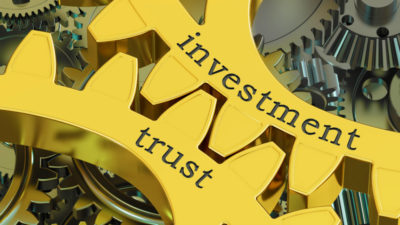One fact that typically gets lost on most is that the majority of oil reserves around the world are restricted from private sector involvement unless local governments extend an olive branch. Need proof? Four out of the top five countries by crude oil reserve levels include Venezuela, Saudi Arabia, Iran and Iraq. Fortunately for the rest of the world, Canada falls directly in the middle of that Middle Eastern-heavy list. All told, the Oil & Gas Journal reported that only 19% of world oil reserves are readily available to the private sector. Of that 19%, the oil sands region, and its 169 billion barrels of proved reserves, is supposedly directly responsible for over half.
The word is out
This fact hasn’t been lost on some of the largest oil producing companies in the world that have chosen to set up some form of operations here. With U.S. production reaching 7.4 million barrels per day (bpd), it only has about 9-10 years of proved oil reserves (not counting unproved and shale oil) remaining. If this supply is depleted, Canadian oil could become more important than ever. Unfortunately, infrastructure, regulatory and technological limitations have kept Canadian oil sands production in check. In fact, Canada and its vast reserves aren’t even predicted to eclipse 6.7 million bpd by 2030.
For those of you thinking that seems like a respectable figure, imagine if the oil sands continue to remain restricted in terms of take-away capacity; just like that, the 3.4 million bpd increase it is supposed to account for could remain a pipedream (Pun intended? I’ll let you decide). Some of you might be thinking, “Hey, railroads have stepped up admirably in terms of oil transportation growth. Won’t they continue to pick up the slack?” To that I would reply that they haven’t even been able to pick up all of the slack that existed prior to a very wise business move by several North American C-suite conductors. Pipelines have historically accounted for 90% of oil transportation, so despite rails prolific growth in 2012 and year-to-date in 2013 it still has a lot of ground to make up.
Let’s do the math
To shine a little bit of light on this sticky situation, TransCanada’s (TSX:TRP,NYSE:TRP) Keystone XL pipeline would play water slide to 830,000 bpd of oil from Canada into the United States. Even in an optimistic report from the U.S. State Department, railroads like Canadian National Railway (TSX:CNR,NYSE:CNI) would only be able to transport 200,000 bpd to the Gulf of Mexico. Even discussing these figures seems trivial in comparison to the expected 3.5 million bpd increase in production that is expected.
In all likelihood, it’s going to require a blend of each with rails taking over in the short-term and pipelines securing the capacity from 2015-16 and beyond. Any sooner than this is a pretty bold claim given that if the Keystone XL pipeline is even able to break ground in 2013, it won’t be completed until sometime in 2015. And right now, that’s a big if.
Is the U.S. enough?
One thing Keystone XL fails to address is the fact that U.S. oil consumption is 2 million bpd less than it was in 2005 and is expected to continue declining as natural gas use increases and vehicles gas mileage requirements rise in accordance with regulations. Wouldn’t Canada prefer to ship its oil to markets that are expected grow? Say, to China? This option is yet another game changer which would allow Canadian oil to both increase in production AND price as it gains greater access to the international markets.
Because both of these geographies will factor heavily in the success of the Canadian oil sands, I am looking at Canadian National Railway has a huge beneficiary over the next 3-5 years. The infrastructure that it has in place cannot be topped for these two purposes in my mind. Don’t believe me? Then you better look up because a train carrying a 150% increase in oil shipments over last year is barreling down the tracks at you. While gains like this are unlikely to continue as scale eventually chips away, aggregate growth is as close to certain as it is establishing a plan to add the oil sands to its portfolio with heated rail cars.
The Foolish Bottom Line
So far this year, CNR’s stock has chugged along, adding 8.2% to its price, but don’t let that detour you. Any further delays in the Keystone XL or other rail projects meant to add access to external markets for Canadian oil could prolong the newfound oil boom. I am believer that these profits are here to stay for several years to come. Are you? If so, a closer look at CNR’s operations might be in order.
Canada’s rail companies are some of the best businesses that this country has to offer. For a glimpse at 3 of the best that our neighbors to the south can muster, click here now and download “3 U.S. Stocks That Every Canadian Should Own”. It’s FREE!
The Motley Fool’s purpose is to help the world invest, better. Click here now for your free subscription to Take Stock, The Motley Fool Canada’s free investing newsletter. Packed with stock ideas and investing advice, it is essential reading for anyone looking to build and grow their wealth in the years ahead.
Follow us on Twitter and Facebook for the latest in Foolish investing.
Fool contributor Taylor Muckerman doesn’t own shares in any of the companies mentioned at this time. David Gardner owns shares of CN Rail. The Motley Fool doesn’t own shares in any of the companies mentioned.







